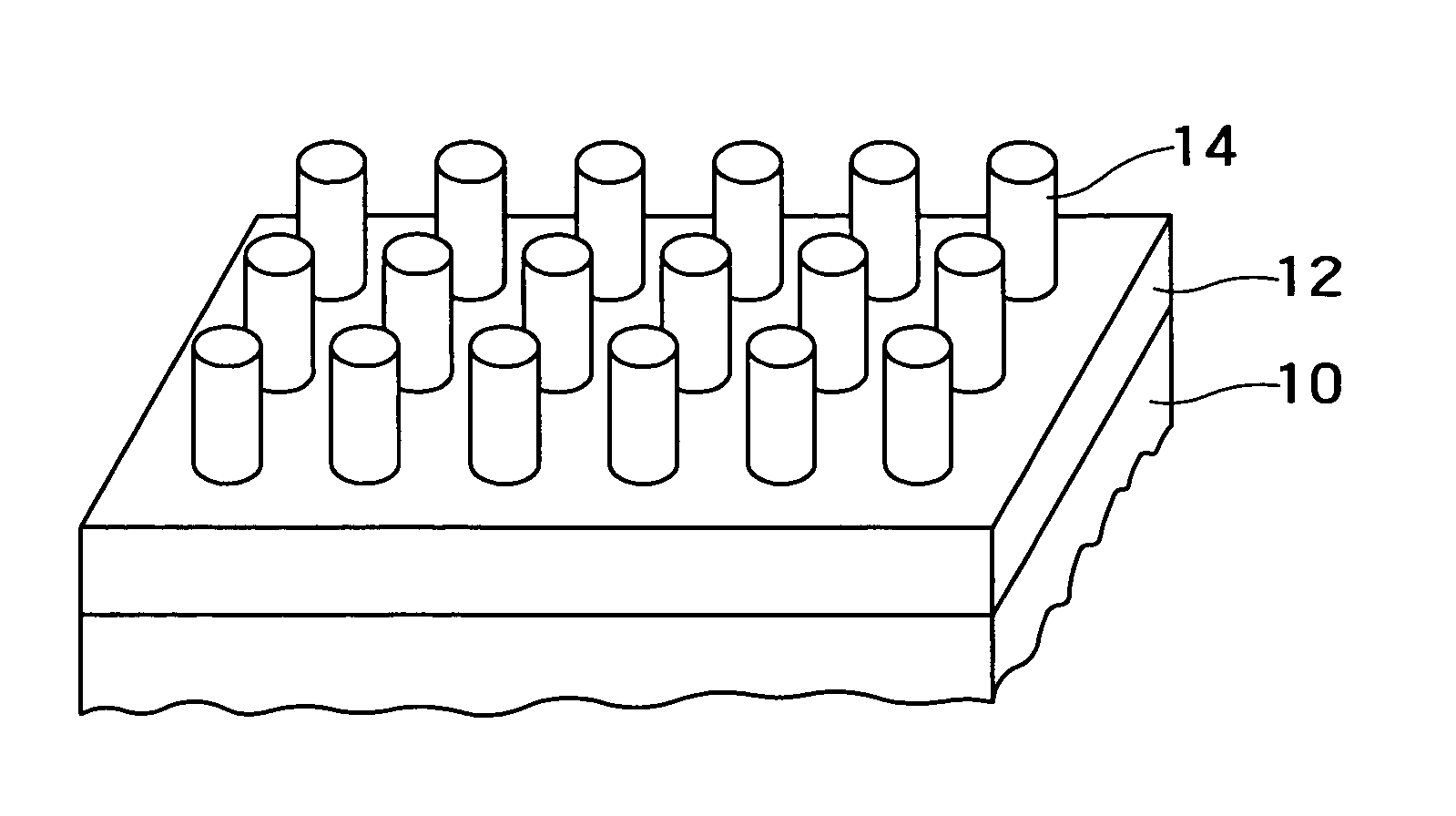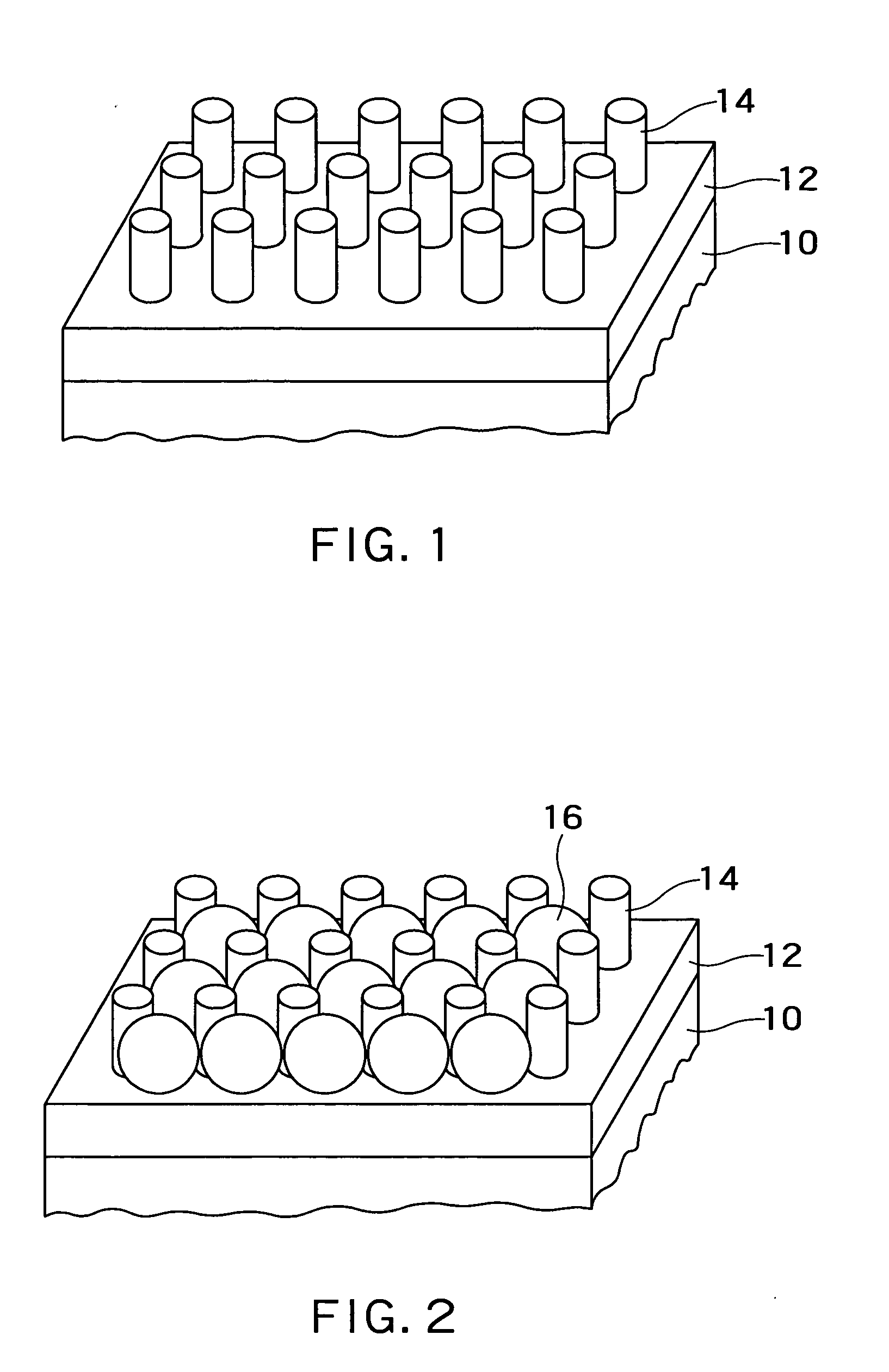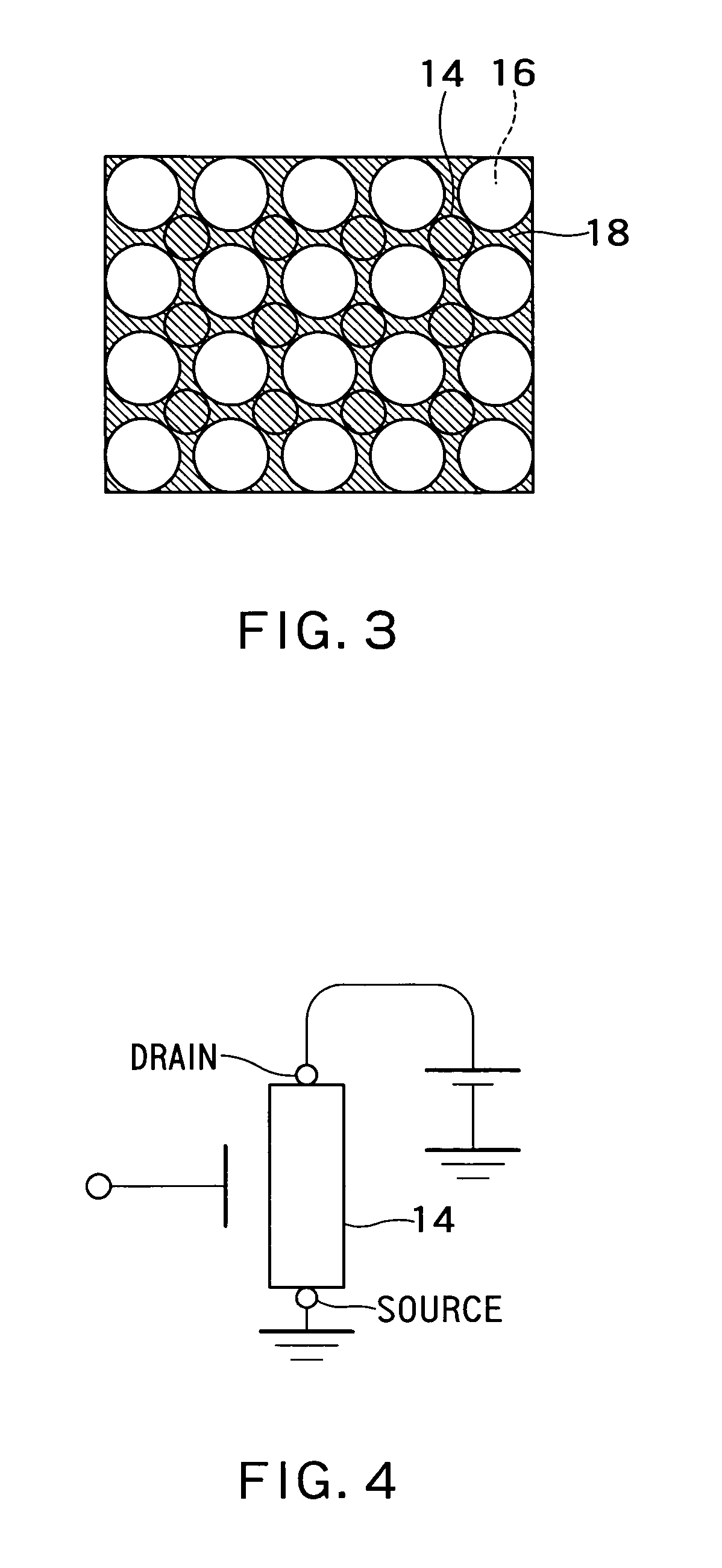Electrode manufacturing method
a manufacturing method and technology of electrodes, applied in the manufacture of electrode systems, electric discharge tubes/lamps, instruments, etc., can solve the problems of inability to form gate electrodes and drain electrodes with respect to each carbon nanotube arranged in a matrix array at intervals less than several tens of nanometers, and the inability to form source electrodes and drain electrodes with respect to each carbon nanotub
- Summary
- Abstract
- Description
- Claims
- Application Information
AI Technical Summary
Benefits of technology
Problems solved by technology
Method used
Image
Examples
second embodiment
(Second Embodiment)
FIGS. 5 to 14 show processes of forming a single electron transistor element according to the second embodiment of the invention in the order of the processes. FIGS. 5, 6, 8, 9, and 12 show the structure on a silicon substrate 10 in sectional views. FIGS. 7, 10, 11, 13, and 14 show the structure on the silicon substrate 10 in plan views.
Referring to FIG. 5, first, a silicon oxide film 20 is formed on the silicon substrate 10 by oxidizing the silicon substrate 10. Then, an aluminum layer 21 having a thickness of about 10 nm is deposited on the silicon oxide film 20. An Al2O3 layer 23 having a thickness of about 1 nm is formed on the aluminum layer 21 by natural oxidization of the aluminum layer 21.
Next, an aluminum layer 25 having a thickness of about 2 nm is deposited on the Al2O3 layer 23. An Al2O3 layer 27 having a thickness of about 1 nm is formed on the aluminum layer 25 by natural oxidization of the aluminum layer 25. Further, an aluminum layer 29 having...
third embodiment
(Third Embodiment)
FIGS. 15 to 17 are sectional views showing manufacturing processes of a field emitter according to the third embodiment of the invention in the order of the processes. Referring to FIG. 15, first, carbon nanotubes 51 are arranged in a matrix form on a substrate 50. The carbon nanotubes 51 are formed by the method disclosed in the non-patent document 2.
Then, polystyrene derivatives 53 are applied onto the substrate 50. At this time, the polystyrene derivatives 53 are included in a solvent, and applied by the spin casting method. When the solvent is volatilized, the polystyrene derivatives 53 are arranged between the carbon nanotubes 51. At that time, the size of the polystyrene derivative 53 may be changed in the same manner as in the first embodiment. The polystyrene derivatives 53 are designed so as to have top portions higher than the tip ends of the carbon nanotubes 51 when arranged between the carbon nanotubes 51. Alternatively, by stacking plural of the pol...
fourth embodiment
(Fourth Embodiment)
FIGS. 18 to 24 are sectional views showing manufacturing processes of a quantum bit (qubit) according to the fourth embodiment of the invention in the order of the processes. FIGS. 18 to 20 show the structure on a silicon substrate 10 in sectional views. FIGS. 21 to 24 show the structure on the silicon substrate 10 in plan views. The embodiment is a method for manufacturing an electrode on a quantum bit formed by electrically bonding two quantum dots, which is disclosed in the non-patent document 5.
Referring to FIG. 18, first, an element area is formed on the surface of the silicon substrate 10, and a silicon oxide film 70 having a thickness of about 7 nm is formed on the surface of the silicon substrate 10. Then, a polysilicon layer 71 having a thickness of about 5 nm is deposited on the silicon oxide film 70 by the CVD method or the like. A silicon oxide film 73 is formed on the polysilicon layer 71 by the CVD method or the like. A polysilicon layer 75 having...
PUM
| Property | Measurement | Unit |
|---|---|---|
| capacitance | aaaaa | aaaaa |
| height | aaaaa | aaaaa |
| size | aaaaa | aaaaa |
Abstract
Description
Claims
Application Information
 Login to View More
Login to View More - R&D
- Intellectual Property
- Life Sciences
- Materials
- Tech Scout
- Unparalleled Data Quality
- Higher Quality Content
- 60% Fewer Hallucinations
Browse by: Latest US Patents, China's latest patents, Technical Efficacy Thesaurus, Application Domain, Technology Topic, Popular Technical Reports.
© 2025 PatSnap. All rights reserved.Legal|Privacy policy|Modern Slavery Act Transparency Statement|Sitemap|About US| Contact US: help@patsnap.com



